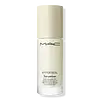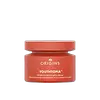What's inside
What's inside
 Key Ingredients
Key Ingredients

 Benefits
Benefits

 Concerns
Concerns

 Ingredients Side-by-side
Ingredients Side-by-side

Water
Skin ConditioningDimethicone
EmollientButylene Glycol
HumectantGlycerin
HumectantNiacinamide
SmoothingTrisiloxane
Skin ConditioningOctyldodecyl Stearoyl Stearate
EmollientTrehalose
HumectantPaeonia Albiflora Flower Extract
TonicCholesterol
EmollientCeramide Ng
Skin ConditioningLinoleic Acid
CleansingSalicylic Acid
MaskingLactic Acid
BufferingGlycolic Acid
BufferingCitric Acid
BufferingAlgae Extract
EmollientSaccharomyces Lysate Extract
HumectantBetula Alba Bark Extract
MaskingCamellia Sinensis Leaf Extract
AntimicrobialThermus Thermophillus Ferment
Skin ConditioningLaminaria Saccharina Extract
Skin ProtectingSilybum Marianum Extract
Skin ConditioningCaffeine
Skin ConditioningBis-PEG-18 Methyl Ether Dimethyl Silane
EmollientAcetyl Glucosamine
Skin ConditioningSodium Hyaluronate
HumectantSorbitol
HumectantSodium Magnesium Silicate
PEG-8
HumectantSucrose
HumectantT-Butyl Alcohol
PerfumingPolyacrylate Crosspolymer-6
Emulsion StabilisingOleth-10
EmulsifyingCarbomer
Emulsion StabilisingAmmonium Acryloyldimethyltaurate/Vp Copolymer
Xanthan Gum
EmulsifyingHydrogenated Lecithin
EmulsifyingJojoba Wax PEG-120 Esters
Sodium Hydroxide
BufferingTromethamine
BufferingDi-C12-18 Alkyl Dimonium Chloride
Skin ConditioningSilica
AbrasiveParfum
MaskingBenzyl Salicylate
PerfumingLimonene
PerfumingLinalool
PerfumingCI 77891
Cosmetic ColorantSynthetic Fluorphlogopite
Tin Oxide
AbrasiveMica
Cosmetic ColorantCaprylyl Glycol
EmollientBHT
AntioxidantDisodium EDTA
Hexylene Glycol
EmulsifyingTocopheryl Acetate
AntioxidantMagnesium Ascorbyl Phosphate
AntioxidantPhenoxyethanol
PreservativeSodium Benzoate
MaskingWater, Dimethicone, Butylene Glycol, Glycerin, Niacinamide, Trisiloxane, Octyldodecyl Stearoyl Stearate, Trehalose, Paeonia Albiflora Flower Extract, Cholesterol, Ceramide Ng, Linoleic Acid, Salicylic Acid, Lactic Acid, Glycolic Acid, Citric Acid, Algae Extract, Saccharomyces Lysate Extract, Betula Alba Bark Extract, Camellia Sinensis Leaf Extract, Thermus Thermophillus Ferment, Laminaria Saccharina Extract, Silybum Marianum Extract, Caffeine, Bis-PEG-18 Methyl Ether Dimethyl Silane, Acetyl Glucosamine, Sodium Hyaluronate, Sorbitol, Sodium Magnesium Silicate, PEG-8, Sucrose, T-Butyl Alcohol, Polyacrylate Crosspolymer-6, Oleth-10, Carbomer, Ammonium Acryloyldimethyltaurate/Vp Copolymer, Xanthan Gum, Hydrogenated Lecithin, Jojoba Wax PEG-120 Esters, Sodium Hydroxide, Tromethamine, Di-C12-18 Alkyl Dimonium Chloride, Silica, Parfum, Benzyl Salicylate, Limonene, Linalool, CI 77891, Synthetic Fluorphlogopite, Tin Oxide, Mica, Caprylyl Glycol, BHT, Disodium EDTA, Hexylene Glycol, Tocopheryl Acetate, Magnesium Ascorbyl Phosphate, Phenoxyethanol, Sodium Benzoate
Water
Skin ConditioningGlycerin
HumectantSqualane
EmollientCaprylic/Capric Triglyceride
MaskingIsoamyl Laurate
EmollientButyrospermum Parkii Butter
Skin ConditioningCetearyl Olivate
Pyrus Malus Seed Oil
EmollientMalus Domestica Fruit Cell Culture Extract
Skin ConditioningPyrus Malus Fiber
AbrasiveZingiber Officinale Root Extract
MaskingLaminaria Digitata Extract
Skin ProtectingLaminaria Saccharina Extract
Skin ProtectingLactobacillus Ferment
Skin ConditioningSodium Hyaluronate
HumectantCaffeine
Skin ConditioningOryzanol
Skin ConditioningTocopherol
AntioxidantGlycine Soja Oil
EmollientAcetyl Hexapeptide-8
HumectantEthylhexylglycerin
Skin ConditioningLecithin
EmollientButylene Glycol
HumectantResveratrol
AntioxidantSorbitan Olivate
EmulsifyingChamomilla Recutita Flower Oil
MaskingMentha Piperita Oil
MaskingCoriandrum Sativum Fruit Oil
MaskingCitrus Nobilis Peel Oil
MaskingMimosa Tenuiflora Leaf Extract
Skin ProtectingCitrus Aurantium Dulcis Peel Oil
MaskingCitrus Aurantium Bergamia Fruit Oil
MaskingCitrus Limon Peel Oil
MaskingRosa Damascena Flower Extract
MaskingRosa Damascena Flower Oil
MaskingMichelia Alba Flower Oil
MaskingCopaifera Officinalis Resin
MaskingFerula Galbaniflua Resin Oil
AntimicrobialJasminum Sambac Flower Extract
MaskingRicinus Communis Seed Oil
MaskingPelargonium Graveolens Flower Oil
MaskingLinalool
PerfumingCitral
PerfumingLimonene
PerfumingCitronellol
PerfumingGeraniol
PerfumingPEG-40 Stearate
EmulsifyingXanthan Gum
EmulsifyingCarbomer
Emulsion StabilisingPhenoxyethanol
PreservativePotassium Sorbate
PreservativeMica
Cosmetic ColorantCI 77891
Cosmetic ColorantWater, Glycerin, Squalane, Caprylic/Capric Triglyceride, Isoamyl Laurate, Butyrospermum Parkii Butter, Cetearyl Olivate, Pyrus Malus Seed Oil, Malus Domestica Fruit Cell Culture Extract, Pyrus Malus Fiber, Zingiber Officinale Root Extract, Laminaria Digitata Extract, Laminaria Saccharina Extract, Lactobacillus Ferment, Sodium Hyaluronate, Caffeine, Oryzanol, Tocopherol, Glycine Soja Oil, Acetyl Hexapeptide-8, Ethylhexylglycerin, Lecithin, Butylene Glycol, Resveratrol, Sorbitan Olivate, Chamomilla Recutita Flower Oil, Mentha Piperita Oil, Coriandrum Sativum Fruit Oil, Citrus Nobilis Peel Oil, Mimosa Tenuiflora Leaf Extract, Citrus Aurantium Dulcis Peel Oil, Citrus Aurantium Bergamia Fruit Oil, Citrus Limon Peel Oil, Rosa Damascena Flower Extract, Rosa Damascena Flower Oil, Michelia Alba Flower Oil, Copaifera Officinalis Resin, Ferula Galbaniflua Resin Oil, Jasminum Sambac Flower Extract, Ricinus Communis Seed Oil, Pelargonium Graveolens Flower Oil, Linalool, Citral, Limonene, Citronellol, Geraniol, PEG-40 Stearate, Xanthan Gum, Carbomer, Phenoxyethanol, Potassium Sorbate, Mica, CI 77891
 Reviews
Reviews

Ingredients Explained
These ingredients are found in both products.
Ingredients higher up in an ingredient list are typically present in a larger amount.
Butylene Glycol (or BG) is used within cosmetic products for a few different reasons:
Overall, Butylene Glycol is a safe and well-rounded ingredient that works well with other ingredients.
Though this ingredient works well with most skin types, some people with sensitive skin may experience a reaction such as allergic rashes, closed comedones, or itchiness.
Learn more about Butylene GlycolCaffeine is most associated with coffee, tea, and cacao. In skincare, it helps with calming inflammation and is rich in antioxidants.
While caffeine is used to treat cellulite and and dark circles, further studies are needed to prove this. It has been believed to help with these skin conditions due to its ability to dilate blood vessels and increase blood flow.
Some studies are looking into caffeine's ability to protect against UV rays.
Learn more about CaffeineCarbomer is a polymer of acrylic acid. Its main role is to create a gel consistency.
A high amount of carbomer can cause pilling or balling up of products. Don't worry, most products contain 1% or less of carbomer.
Ci 77891 is a white pigment from Titanium dioxide. It is naturally found in minerals such as rutile and ilmenite.
It's main function is to add a white color to cosmetics. It can also be mixed with other colors to create different shades.
Ci 77891 is commonly found in sunscreens due to its ability to block UV rays.
Learn more about CI 77891Glycerin is already naturally found in your skin. It helps moisturize and protect your skin.
A study from 2016 found glycerin to be more effective as a humectant than AHAs and hyaluronic acid.
As a humectant, it helps the skin stay hydrated by pulling moisture to your skin. The low molecular weight of glycerin allows it to pull moisture into the deeper layers of your skin.
Hydrated skin improves your skin barrier; Your skin barrier helps protect against irritants and bacteria.
Glycerin has also been found to have antimicrobial and antiviral properties. Due to these properties, glycerin is often used in wound and burn treatments.
In cosmetics, glycerin is usually derived from plants such as soybean or palm. However, it can also be sourced from animals, such as tallow or animal fat.
This ingredient is organic, colorless, odorless, and non-toxic.
Glycerin is the name for this ingredient in American English. British English uses Glycerol/Glycerine.
Learn more about GlycerinWe don't have a description for Laminaria Saccharina Extract yet.
Limonene is a fragrance that adds scent and taste to a formulation.
It's found in the peel oil of citrus fruits and other plants such as lavender and eucalyptus. The scent of limonene is generally described as "sweet citrus".
Limonene acts as an antioxidant, meaning it helps neutralize free radicals.
When exposed to air, oxidized limonene may sensitize the skin. Because of this, limonene is often avoided by people with sensitive skin.
The term 'fragrance' is not regulated in many countries. In many cases, it is up to the brand to define this term. For instance, many brands choose to label themselves as "fragrance-free" because they are not using synthetic fragrances. However, their products may still contain ingredients such as essential oils that are considered a fragrance.
Learn more about LimoneneLinalool is a fragrance and helps add scent to products. It's derived from common plants such as cinnamon, mint, citrus, and lavender.
Like Limonene, this ingredient oxidizes when exposed to air. Oxidized linalool can cause allergies and skin sensitivity.
This ingredient has a scent that is floral, spicy tropical, and citrus-like.
Learn more about LinaloolMica is a naturally occurring mineral used to add shimmer and color in cosmetics. It can also help improve the texture of a product or give it an opaque, white/silver color.
Serecite is the name for very fine but ragged grains of mica.
This ingredient is often coated with metal oxides like titanium dioxide. Trace amounts of heavy metals may be found in mica, but these metals are not harmful in our personal products.
Mica has been used since prehistoric times throughout the world. Ancient Egyptian, Indian, Greek, Roman, Aztec, and Chinese civilizations have used mica.
Learn more about MicaPhenoxyethanol is a preservative that has germicide, antimicrobial, and aromatic properties. Studies show that phenoxyethanol can prevent microbial growth. By itself, it has a scent that is similar to that of a rose.
It's often used in formulations along with Caprylyl Glycol to preserve the shelf life of products.
Sodium Hyaluronate is hyaluronic acid's salt form. It is commonly derived from the sodium salt of hyaluronic acid.
Like hyaluronic acid, it is great at holding water and acts as a humectant. This makes it a great skin hydrating ingredient.
Sodium Hyaluronate is naturally occurring in our bodies and is mostly found in eye fluid and joints.
These are some other common types of Hyaluronic Acid:
Learn more about Sodium HyaluronateWater. It's the most common cosmetic ingredient of all. You'll usually see it at the top of ingredient lists, meaning that it makes up the largest part of the product.
So why is it so popular? Water most often acts as a solvent - this means that it helps dissolve other ingredients into the formulation.
You'll also recognize water as that liquid we all need to stay alive. If you see this, drink a glass of water. Stay hydrated!
Learn more about WaterXanthan gum is used as a stabilizer and thickener within cosmetic products. It helps give products a sticky, thick feeling - preventing them from being too runny.
On the technical side of things, xanthan gum is a polysaccharide - a combination consisting of multiple sugar molecules bonded together.
Xanthan gum is a pretty common and great ingredient. It is a natural, non-toxic, non-irritating ingredient that is also commonly used in food products.
Learn more about Xanthan Gum